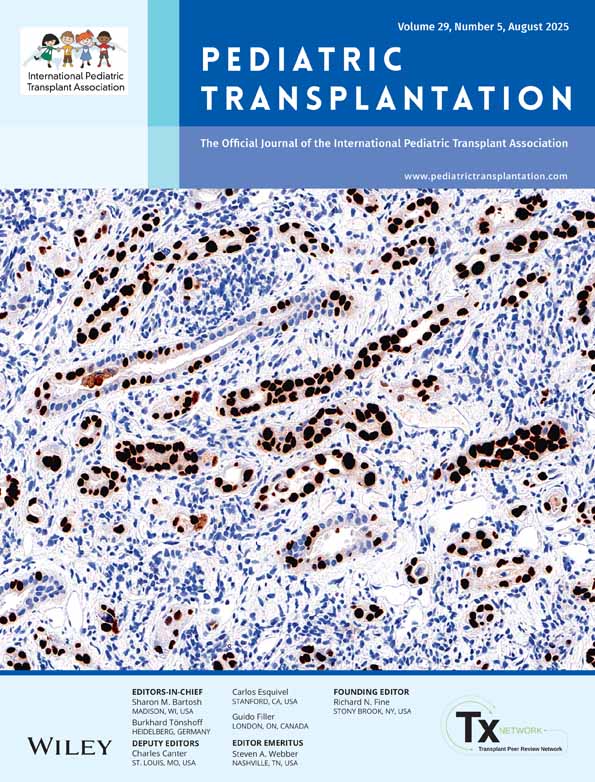A Case Report of a Simultaneous Pediatric Orthotopic Liver Transplant and Vertical Sleeve Gastrectomy in a 10-Year-Old Male With Cirrhosis and Obesity
Funding: The authors received no specific funding for this work.
ABSTRACT
Background
Liver transplantation is a lifesaving procedure for children with end-stage liver disease. Obesity and weight gain can lead to post-transplant steatosis and increased morbidity and mortality. Bariatric surgery improves outcomes in children with severe obesity by reducing weight and subsequent comorbidities. We present a case of simultaneous orthotopic liver transplant and vertical sleeve gastrectomy.
Methods
Retrospective case report.
Results
An 8-year-old male presented with right upper quadrant pain. Workup demonstrated cirrhosis with portal hypertension due to a vertically transmitted hepatitis C virus (HCV). Despite treatment for HCV, he developed decompensated disease and was listed for liver transplantation at 10 years of age. Due to class 3 severe obesity and associated comorbidities, he underwent a simultaneous vertical sleeve gastrectomy (VSG) and deceased donor orthotopic liver transplantation. Postoperative course was complicated by a prolonged oxygen requirement that resolved within 2 weeks. No staple line or gastric bleeding issues were noted. More than 1 year after transplantation, he has good graft function on tacrolimus monotherapy. He had a 21.1% reduction from his peak BMI of 42.97 to 33.91 kg/m2 with weight stabilization postoperatively despite steroid use for induction immunosuppression.
Conclusion
Our experience demonstrates that liver transplant and vertical sleeve gastrectomy can be done concomitantly and safely in selected pediatric patients. Assessing the long-term outcomes of this and other similar patients will assist in the determination of optimal patient selection, target and actual BMI reduction, and metabolic goals in the pediatric liver transplant population.
Conflicts of Interest
The authors declare no conflicts of interest.
Open Research
Data Availability Statement
The data that support the findings of this study are available on request from the corresponding author. The data are not publicly available due to privacy or ethical restrictions.




